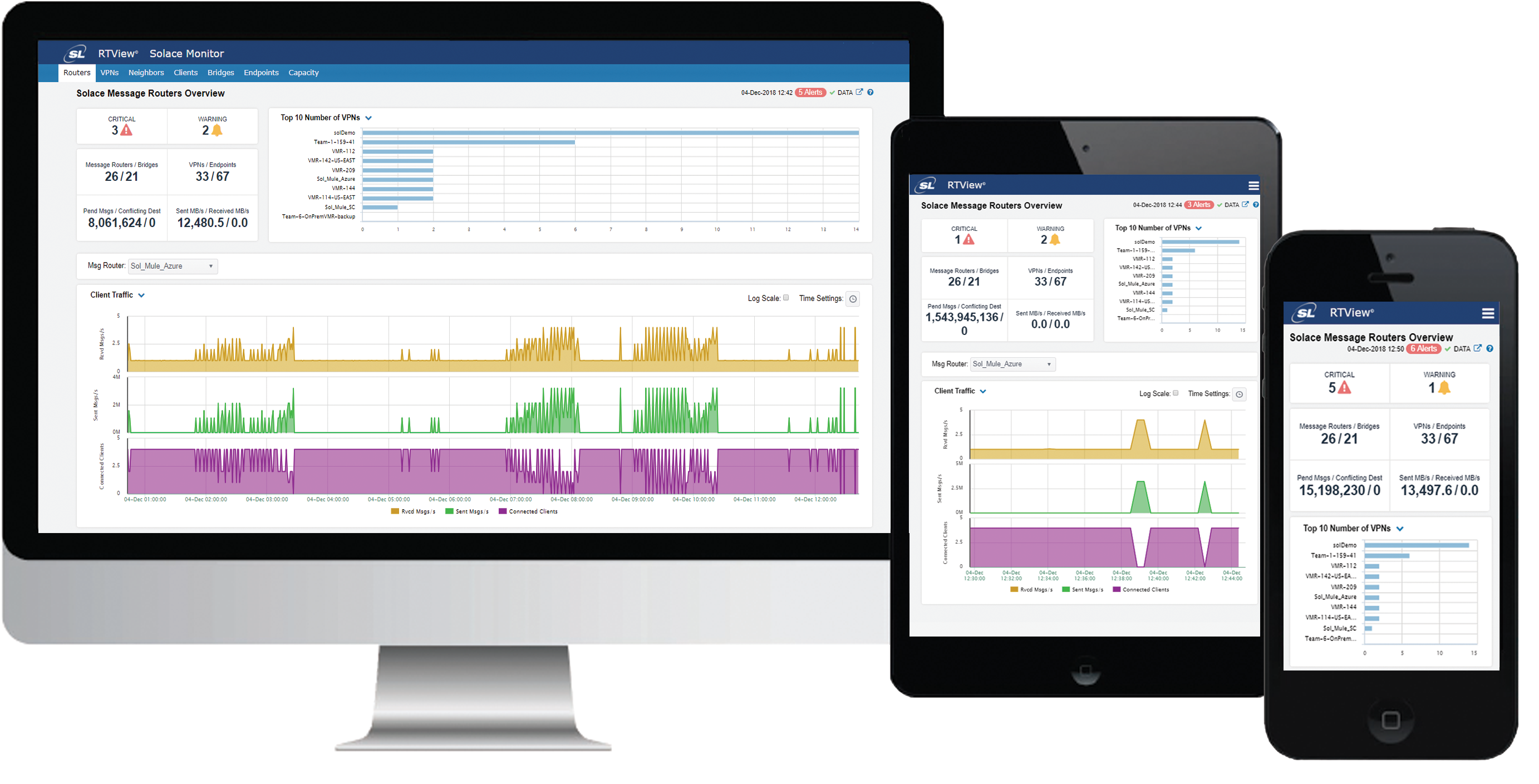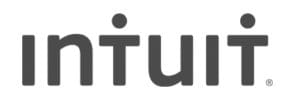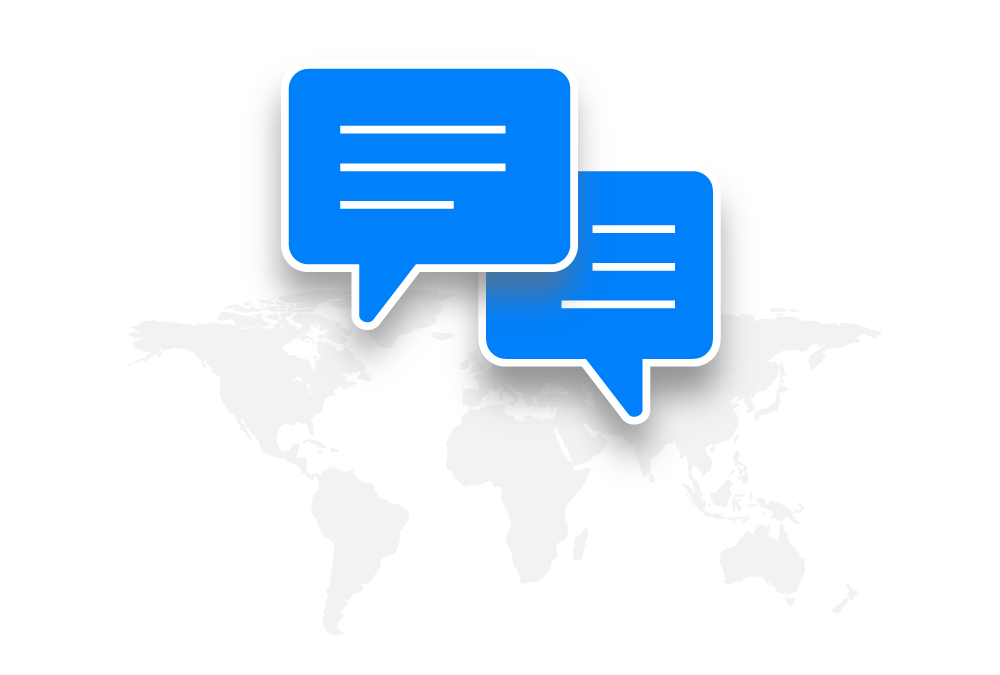RTView® Core
Provides the processing engine and presentation capabilities for large-scale distributed monitoring and control applications.
Provides the processing engine and presentation capabilities for large-scale distributed monitoring and control applications.

RTView Core is used by Java application developers to quickly create and deploy custom, high-performance graphical applications with minimal programming.
Taken together, these features provide developers, system integrators, and OEMs with a complete set of capabilities and many options for implementing rich and often customized monitoring solutions. This is useful in those situations where a project requires that the RTView® Enterprise Edition or Solution Packages be extended, or a completely custom monitoring solution be developed.
RTView Core is used by Java application developers to quickly create and deploy custom, high-performance graphical applications with minimal programming.
Taken together, these features provide developers, system integrators, and OEMs with a complete set of capabilities and many options for implementing rich and often customized monitoring solutions. This is useful in those situations where a project requires that the RTView® Enterprise Edition or Solution Packages be extended, or a completely custom monitoring solution be developed.
The RTView Core Real-Time Data Engine incorporates highly optimized mechanisms for real-time data caching and historical archival, flexible alerting capabilities, advanced data analysis and transformation functions, support of multiple data distribution techniques, as well as full-featured and extensible visualization capabilities.
In addition, it can be optionally configured to permit manual or automated control of processes and systems being monitored.
The RTView Core Real-Time Data Engine incorporates highly optimized mechanisms for real-time data caching and historical archival, flexible alerting capabilities, advanced data analysis and transformation functions, support of multiple data distribution techniques, as well as full-featured and extensible visualization capabilities.
In addition, it can be optionally configured to permit manual or automated control of processes and systems being monitored.
In addition to enabling the creation of real-time displays, the RTView Builder is also used to define data caches, transformations, aggregations, analytics, custom alerts, as well as interfaces that permit user control of target systems.
Other tools provide for report generation, display analysis and optimization, data export, automated deployment, and the development of custom data adapters.
In addition to enabling the creation of real-time displays, the RTView Builder is also used to define data caches, transformations, aggregations, analytics, custom alerts, as well as interfaces that permit user control of target systems.
Other tools provide for report generation, display analysis and optimization, data export, automated deployment, and the development of custom data adapters.
RTView features a sophisticated real-time alert engine that enables management and operational personnel to monitor the health and status of business operations. The alert engine can monitor conditions and perform automated actions from any available RTView data source.
There are four alert types supported in RTView:
1. Limits alerts
2. Discrete alerts
3. Multi State
4. Event
RTView features a sophisticated real-time alert engine that enables management and operational personnel to monitor the health and status of business operations. The alert engine can monitor conditions and perform automated actions from any available RTView data source.
There are four alert types supported in RTView:
1. Limits alerts
2. Discrete alerts
3. Multi State
4. Event
Alerts can automate actions such as email, system commands, performing a SQL statement or sending JMS messages. Custom alerts are easily created in RTView using the Builder to add and configure properties.
RTView provides support for self-service alerts, giving users the ability to modify threshold, duration and enable settings of alert definitions at run-time via an easy-to-use interface.
RTView provides an alert action audit feature to track actions taken by individual users to resolve situations related to active alerts. Alert audits also help validate that correct actions were performed in a timely fashion when critical events occur and are often valuable for fine tuning work flow.
The RTView Data Historian enables more effective analysis of metrics by providing views of real-time data that is presented with historical context. The Historian is commonly used for:
Business, Operations and Performance Analysis
Users can implement trend charts to view and compare current real-time data with historical values and perform calculations on a wide range of metric values over a long period of time.
Baselines & and Alerting
Support teams are able to create alerts when current metrics are outside the normal range using historical data as the baseline.
Reporting and Audit Trails
Create a database that you can leverage for a variety of reporting or auditing tools, and for surveying your historical data.
The RTView Data Historian enables more effective analysis of metrics by providing views of real-time data that is presented with historical context. The Historian is commonly used for:
Business, Operations and Performance Analysis
Users can implement trend charts to view and compare current real-time data with historical values and perform calculations on a wide range of metric values over a long period of time.
Baselines & and Alerting
Support teams are able to create alerts when current metrics are outside the normal range using historical data as the baseline.
Reporting and Audit Trails
Create a database that you can leverage for a variety of reporting or auditing tools, and for surveying your historical data.
RTView Core includes the following data adapters:
Real-time Data Adapters
1. XML
2. Message-oriented Middleware
3. Infrastructure & Application Data
4. Complex Event Streams
Custom Data Adapter API
1. http://data
2. Flat File
3. Web Services
4. Generic polled
5. Generic asynchronous
Persistent Data Adapters
1. SQL (JDBC, ODBC)
2. OLAP















